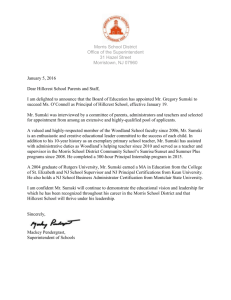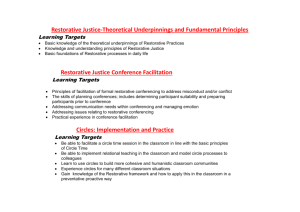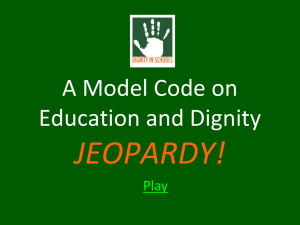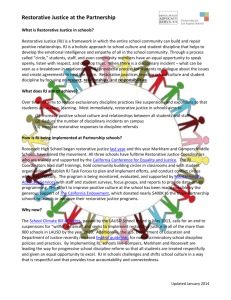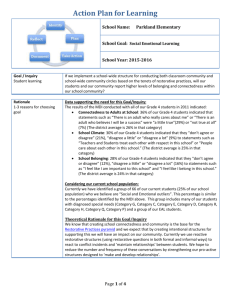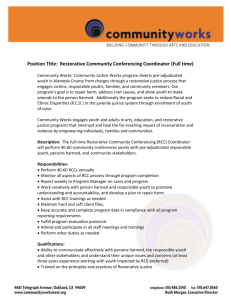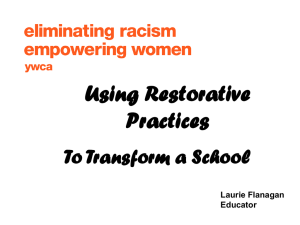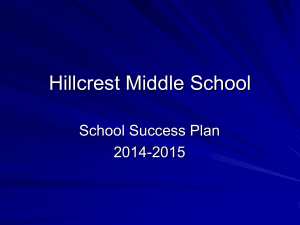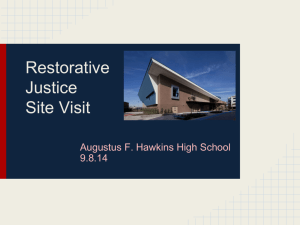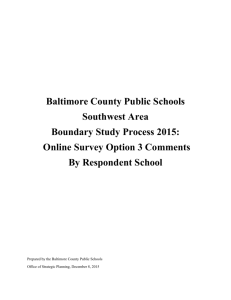APL 2015
advertisement
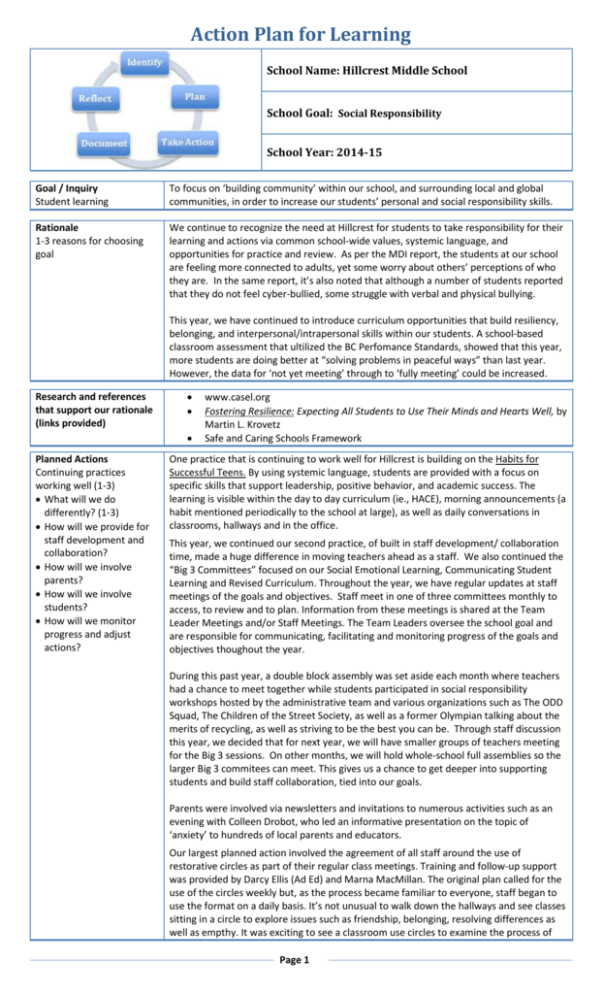
Action Plan for Learning School Name: Hillcrest Middle School School Goal: Social Responsibility School Year: 2014-15 Goal / Inquiry Student learning To focus on ‘building community’ within our school, and surrounding local and global communities, in order to increase our students’ personal and social responsibility skills. Rationale 1-3 reasons for choosing goal We continue to recognize the need at Hillcrest for students to take responsibility for their learning and actions via common school-wide values, systemic language, and opportunities for practice and review. As per the MDI report, the students at our school are feeling more connected to adults, yet some worry about others’ perceptions of who they are. In the same report, it’s also noted that although a number of students reported that they do not feel cyber-bullied, some struggle with verbal and physical bullying. This year, we have continued to introduce curriculum opportunities that build resiliency, belonging, and interpersonal/intrapersonal skills within our students. A school-based classroom assessment that ultilized the BC Perfomance Standards, showed that this year, more students are doing better at “solving problems in peaceful ways” than last year. However, the data for ‘not yet meeting’ through to ‘fully meeting’ could be increased. Research and references that support our rationale (links provided) Planned Actions Continuing practices working well (1-3) What will we do differently? (1-3) How will we provide for staff development and collaboration? How will we involve parents? How will we involve students? How will we monitor progress and adjust actions? www.casel.org Fostering Resilience: Expecting All Students to Use Their Minds and Hearts Well, by Martin L. Krovetz Safe and Caring Schools Framework One practice that is continuing to work well for Hillcrest is building on the Habits for Successful Teens. By using systemic language, students are provided with a focus on specific skills that support leadership, positive behavior, and academic success. The learning is visible within the day to day curriculum (ie., HACE), morning announcements (a habit mentioned periodically to the school at large), as well as daily conversations in classrooms, hallways and in the office. This year, we continued our second practice, of built in staff development/ collaboration time, made a huge difference in moving teachers ahead as a staff. We also continued the “Big 3 Committees” focused on our Social Emotional Learning, Communicating Student Learning and Revised Curriculum. Throughout the year, we have regular updates at staff meetings of the goals and objectives. Staff meet in one of three committees monthly to access, to review and to plan. Information from these meetings is shared at the Team Leader Meetings and/or Staff Meetings. The Team Leaders oversee the school goal and are responsible for communicating, facilitating and monitoring progress of the goals and objectives thoughout the year. During this past year, a double block assembly was set aside each month where teachers had a chance to meet together while students participated in social responsibility workshops hosted by the administrative team and various organizations such as The ODD Squad, The Children of the Street Society, as well as a former Olympian talking about the merits of recycling, as well as striving to be the best you can be. Through staff discussion this year, we decided that for next year, we will have smaller groups of teachers meeting for the Big 3 sessions. On other months, we will hold whole-school full assemblies so the larger Big 3 commitees can meet. This gives us a chance to get deeper into supporting students and build staff collaboration, tied into our goals. Parents were involved via newsletters and invitations to numerous activities such as an evening with Colleen Drobot, who led an informative presentation on the topic of ‘anxiety’ to hundreds of local parents and educators. Our largest planned action involved the agreement of all staff around the use of restorative circles as part of their regular class meetings. Training and follow-up support was provided by Darcy Ellis (Ad Ed) and Marna MacMillan. The original plan called for the use of the circles weekly but, as the process became familiar to everyone, staff began to use the format on a daily basis. It’s not unusual to walk down the hallways and see classes sitting in a circle to explore issues such as friendship, belonging, resolving differences as well as empthy. It was exciting to see a classroom use circles to examine the process of Page 1 learning, to reflect on academic choices and challenges through units of study. In the office, the administrators and the counsellor also make use of restorative practice by using circles with students. Backup Documentation to support planned actions Documentation of learning Key evidence of change How did your actions make a difference? How do you know? Choose 1-3 pieces of evidence to demonstrate the impact your actions have had on student learning to meet your goal. Documentation could include video, survey results, performance standard data, anecdotal evidence, work samples, etc. Backup Documentation to show impact of actions As the school year has progressed, we have experienced noticeable improvement in a number of areas: increased collaboration among staff, greater staff involvement within our community, improved staff collaboration with admin, and seamlessness communication among our school’s Big 3 Committees. Last year, our goal for this year we to see 95% of students fully meeting expectations or better on the Social Responsibility Performance Standards, (as we only had 65% fully meeting expectations or better). This year, we have seen 77% of students fully meeting expectations or better on the Social Responsibility Performance Standards (which is an increase of 12%). We still feel the need to focus on this area. We have experienced many positive restorative circles where students used what they learned in class-meetings to resolve issues. Students had the voice, the language, and the process to sort through difficulties on their own. Students used words such as ‘confident’ and ‘empowered’ to describe how the process worked for their self- initiated restorative opportunities. One piece that has reflected this is found in the end of the year data gathered by our grade 6 teachers where well over 90% of their students are meeting (and above) in ‘valuing diversity and defending human rights’. Themes such as these have been woven throughout classroom circle time. Video from Social Responsibility Week and Video from ‘What is Hillcrest ALL about?’Located on our school website. Extended Version of Documentation.pdf Reflection Highlights Where are we now? What are some patterns emerging? What surprised you? What conclusions / inferences might you draw? How does this inform potential next steps? Our social responsibility goal has tied in nicely with our LIF initiatives (inclusive classrooms). Our major intent involved working positively and collaboratively together within our school community and we are well on our way to building capability in this area. This year, the staff has worked to develop greater collaboration, building on each other’s strengths. At this point, however, we feel we need to begin working on our own individual and personal skills for dealing with student conflict, anxiety, and overall learning habits. Anxiety is a major theme in many parent meetings. We have worked to increase staff skills with anxiety and co-teaching opportunities to increase our capacity to support the needs in our classrooms. As we have formed so many new partnerships (Ab-Ed Dept., Best Secondary School, and The Eagle Ridge Hospital Foundation), we feel it is important for us to meet with a larger community advisory. It’s important to meet as a staff and PAC, but we also believe we need to share information about our activities and have regular conversations with the groups that support our school. What’s next? Next year, we would like to be more intentional and focus time on a daily basis within the classroom to help with the complex composition model and continue building the coteaching model at the same time. Indeed, we are looking for spaces within the building to enable co-teaching to be most effective next year. To this end, we will continue to teach systemic language and strategies to help students cope, and to continue to reinforce restorative circles and practices of building ‘voice’. Through focusing on co-teaching, we want to continue to focus on different clusters of struggling learners, to work within the classrooms to increase student skill sets. Our goal is to support students by increasing their “personal tool boxes” so that they understand their own learning styles, improve study habits, develop organizational skills, and learn to resolve conflict. Academically, we have had a significant increase in student achievement in all areas and we feel there is a direct correlation between students taking more ownership for their learning and personal responsibility. For next year, we are planning on moving even further with a focus on personal responsibility. Page 2 Signatures School Name: Hillcrest Middle School School Goal: Social Responsibility School Year: 2013-14 Submitted by School Planning Council: Title Name Principal Nadine Tambellini Parent Parent Parent Recommended by Assistant Superintendent: Assistant Superintendent Julie Pearce Board and Superintendent Approval: Board Chair Judy Shirra Superintendent Patricia Gartland Print this page, have it signed by School Planning Council, scan it and attach it here Signatures.pdf Page 3 Signature
